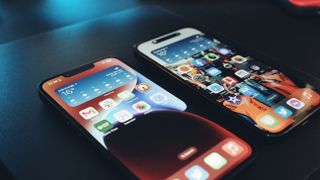This Australian iPhone can use the EU's third-party app stores and more, but it's a messy workaround you probably shouldn't try
Possible, but not workable.

You don't need to have been following along too closely to know that there are big changes happening to the iPhone right now. Those changes alter the way millions of people use their iPhones every day, but they're only available to people who live in the European Union. The new Digital Markets Act has forced Apple to open the iPhone to third-party app marketplaces and more. And it turns out that there's a way to confuse your iPhone into thinking the DMA applies to you, no matter where you live.
Because the changes brought about by the DMA only applied to EU citizens, Apple has region-locked those tweaks to devices used in that part of the world. The iPhone needs multiple pieces of data to align to ensure that an iPhone really is one based in the EU, so just changing your Apple ID or the iPhone's region won't cut it. However, someone has been able to confuse their Australian iPhone so much that it thinks it's in Italy — an EU member state.
The process of making that happen was convoluted, however, and it still isn't entirely clear which step did the trick — although it's possible it required a combination of multiple. However, the fact that it's possible could open the door to easier approaches in the future, although I have to imagine Apple will try to block that wherever possible. Will EU DMA workarounds become the new jailbreaking, with Apple and developers duking it out?
Wonky workaround
The process of iPhone confusion has been detailed by Australian Adam Demasi on his blog and it makes for interesting reading. It appears that Apple downloads a new plist file to determine which part of the world an iPhone is in and then uses that to decide which features are available.
"A plist file downloaded from Apple declares “domains”, which are individual features locked behind a location wall," Demasi explains. "At the time of writing, there are 24 (although one is missing), and the file was last updated on the 5th of April." Notably, that's when iOS 17.4 launched and the DMA was just around the corner.
However, actually making an iPhone think that it is in one of the EU countries in the plist isn't easy. " I took my old 12 Pro Max and started tinkering around," Demasi says. "I reset the phone, disabled Location Services, inserted an Italian SIM from my holiday many years ago, and made a new Italian Apple ID. No good."
None of that is unexpected. So Demasi set about trying new things including setting up a new router that broadcast its Wi-Fi network as if it was in Italy. There are various regulatory reasons that you might not want to do that, but it technically works and definitely did for the purposes of this test.
Master your iPhone in minutes
iMore offers spot-on advice and guidance from our team of experts, with decades of Apple device experience to lean on. Learn more with iMore!
After restoring the iPhone and connecting to the Wi-Fi, the iPhone still knew that it was in Australia. But then things got interesting.
"The last thing I tried was going downstairs to our basement, where there’s no mobile signal," we're told. "Reset the phone again, and what do you know, as soon as I open Safari it asks me to choose a browser. I put the phone in airplane mode so I can go back upstairs. As far as I can tell, it still believes I’m in Italy."
The workaround works, it seems, but it's less than ideal. As soon as that iPhone connects to a cellular tower it'll know that it's no longer in Italy and all bets will be off. Connecting the iPhone to another Wi-Fi network will likely have the same effect, too.
Still, for now at least, it appears that the Australian-Italian iPhone will have access to third-party marketplaces and everything else that comes with the DMA. It's just not all that usable, unfortunately.
It's always interesting to see these kinds of workarounds in action, but it remains to be seen for how long this one works. I don't expect it'll be for long, that's for sure.
More from iMore

Oliver Haslam has written about Apple and the wider technology business for more than a decade with bylines on How-To Geek, PC Mag, iDownloadBlog, and many more. He has also been published in print for Macworld, including cover stories. At iMore, Oliver is involved in daily news coverage and, not being short of opinions, has been known to 'explain' those thoughts in more detail, too. Having grown up using PCs and spending far too much money on graphics card and flashy RAM, Oliver switched to the Mac with a G5 iMac and hasn't looked back. Since then he's seen the growth of the smartphone world, backed by iPhone, and new product categories come and go. Current expertise includes iOS, macOS, streaming services, and pretty much anything that has a battery or plugs into a wall. Oliver also covers mobile gaming for iMore, with Apple Arcade a particular focus. He's been gaming since the Atari 2600 days and still struggles to comprehend the fact he can play console quality titles on his pocket computer.
Most Popular




